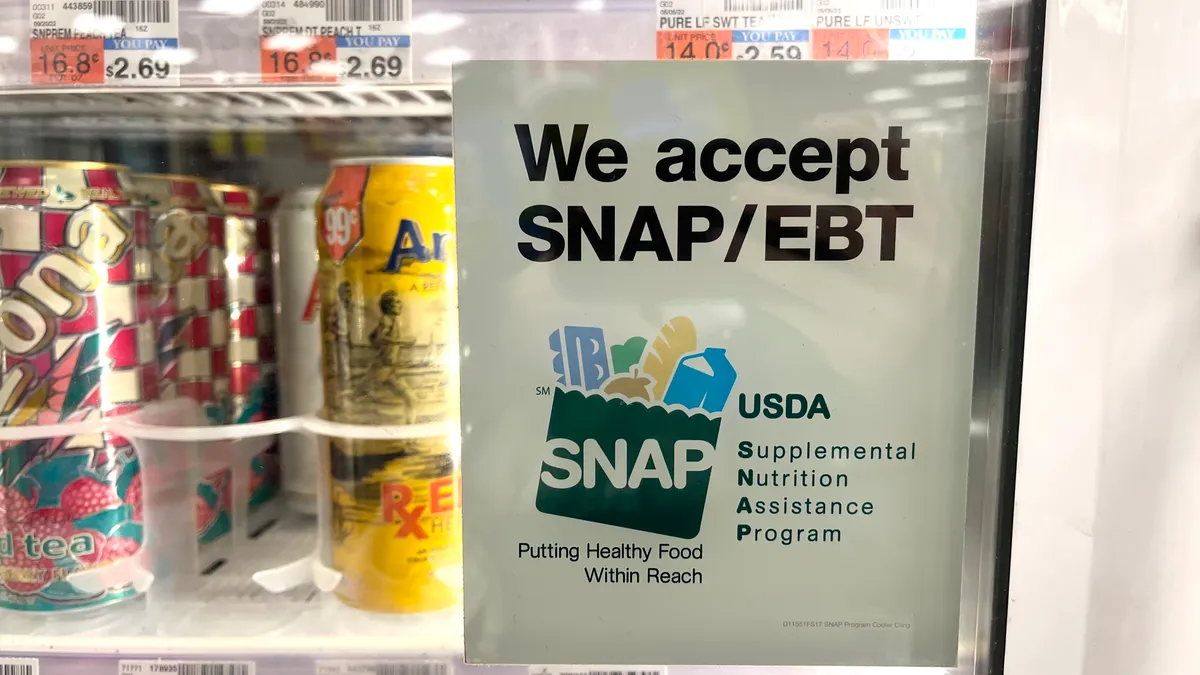Dive Brief:
- Discount chains Save A Lot, Food 4 Less and Dollar General are in the top three positions among U.S. retailers to attract and retain shoppers who receive SNAP benefits, according to a report released Monday by data analysis firm Dunnhumby.
- The companies lead a list of retailers Dunnhumby identified as being more likely to serve financially stressed shoppers while also having reputations for offering low prices. Winco and Grocery Outlet rounded out the top five positions, followed by Price Rite, Walmart, Aldi, Marcs and H-E-B.
- The challenges people with tight grocery budgets face makes these shoppers especially likely to become loyal customers, Dunnhumby said in its report.
Dive Insight:
SNAP shoppers not only face severe limits on how much they can spend on groceries but also tend to be strapped for time, Dunnhumby said. Those factors mean households that receive benefits through the program can be expected to gravitate toward retailers that make it easier for them to get food that they can afford, the researchers said.
Dunnhumby based its report, “The SNAP Rollercoaster,” on data from government agencies as well as data collected from 70,000 grocery shoppers between 2017 and 2022 for its Retail Preference Index.
The vast majority of SNAP benefits (92%) go to households with incomes that fall at or below the poverty line, which the federal government defines as $30,000 for a family of four, according to the Food Research & Action Center. In addition, households with a child, elderly person or person with disabilities account for about 86% of benefits, the center noted.
Lower-income households shop at 3.6 grocery banners in an average month compared with the 4.5 banners more affluent households typically patronize monthly, and they tend to devote a larger share of their grocery budget to a particular retailer, Dunnhumby found.
“In that sense, they are more likely to give you their loyalty, should you earn it, than higher income shoppers who have bigger grocery budgets,” Dunnhumby said in the report, adding, “Once their loyalty is earned, retailers will be more likely to keep it.”
Dunnhumby added that the recent benefit reductions many SNAP recipients are confronting is likely to drive U.S. grocery revenue down by $20 billion this year, underscoring the importance for retailers of focusing on value, the researchers concluded.
In addition, inflation ate into the added SNAP benefits while they were in effect, diminishing their impact and shining a spotlight on the role grocers play in ensuring groceries are affordable, according to Dunnhumby.
“This year, [SNAP recipients] are again left in a precarious position with a deep reduction in their SNAP benefits resulting in much less disposable income available to take care of their household food needs. Retailers need to understand that one out of every eight grocery shoppers in 2023 are walking into their stores stressed, emotionally drained, and looking for retailers to be part of the solution,” Matt O’Grady, president of the Americas for Dunnhumby, said in a statement.
Dunnhumby noted that Walmart is in a particularly strong position to help SNAP shoppers make ends meet because of its size and the fact that it likely has a higher proportion of SNAP recipients among its customer base.
Dunnhumby also found that lower-income shoppers tend to be more reliant than those with higher incomes on categories like ready-to-eat meals and frozen food, but are less likely to purchase healthy items like fresh produce.













